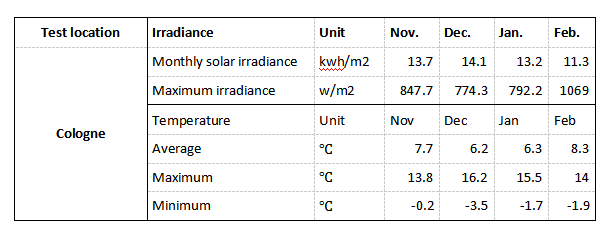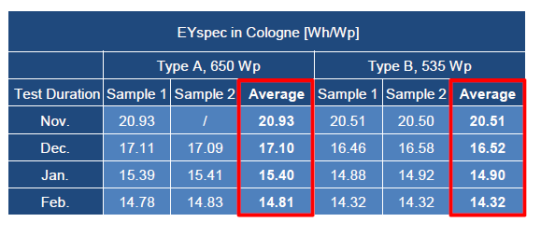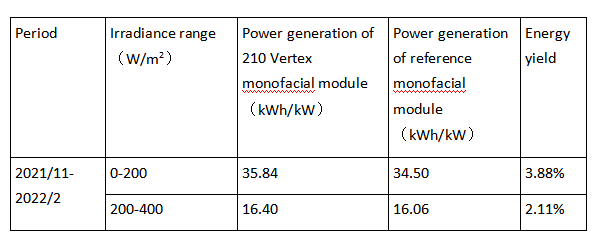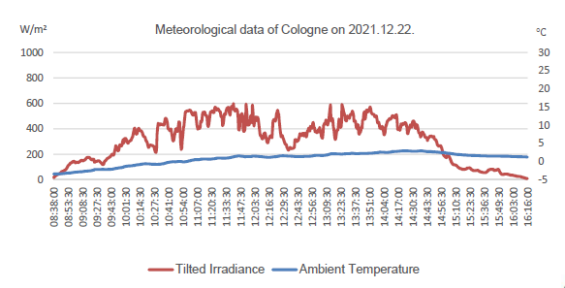From November 2021 the world’s leading testing service provider, TÜV Rheinland, began conducting a 12-month field performance test of Trina Solar’s 210 Vertex ultra-high power monofacial and bifacial modules. Data analyzed for the first four months shows that under various conditions of latitude and climate, Vertex 600W+ modules have higher bifacial gain, greater energy yield gain and more stable working temperature than regular reference modules.

TÜV Rheinland’s field test project in Cologne, Germany: 210 Vertex modules v reference modules (monofacial)
The outdoor test sites include Cologne, Germany (temperate zone), Thuwal, Saudi Arabia (tropical desert) and Hainan province, China (maritime). This field test focuses on the project in Cologne, and results show that the energy yield of the Vertex 600W+ modules is at least 2% higher than reference modules.
Rigorous design, 30s high frequency collection method to ensure data accuracy
In TÜV Rheinland global energy yield field tests, numerous sophisticated testing techniques are used to ensure reliability, taking solar radiation meters as an example, possessing highest WMO standard. Rigorous system design and the 30s high frequency data collection is used in recording data.
Vertex 600W+ modules: 2% higher energy yield in low irradiation
Different locations and climate will affect the power generation capability of the same type of module. The first project location of the series global field tests is Cologne, with its four distinct seasons, and is characterized with low irradiation. The data collected and analyzed between 2021/11-2022/2 shows that Trina Solar’s Vertex 670W modules have achieved excellent results.
The test sample of Cologne’s project site is Type A: 210 Vertex monofacial 650W module, and Type B: regular reference monofacial 535W module. The meteorological data between 2021/11-2022/2 was:

During the testing period, Trina Solar’s Vertex modules gained more than 2% higher energy yield. TÜV Rheinland have conducted in-depth analysis.

Analysis: low irradiation plus Vertex modules is a double win
First of all, Trina Solar’s 210 Vertex modules are superior in power generation per watt under low irradiation conditions. The following table shows that when irradiation is lower than 200W/m2, the power generation of 210 Vertex modules is 3.88% higher than that of the reference modules; when irradiation is between 200-400W/m2, the power generation is 2.11% higher.

Second, it was winter in Cologne during the test period, and irradiation and temperatures were very low. The average daily solar irradiance was only 0.4kWh/ m2/day.

Taking 2021/12/22 as an example, solar irradiance for a whole day was 2.17kWh/ m2, much higher than the average of 0.4kWh/m2/day. Nevertheless, 43% of the irradiation of the day was lower than 400W/M2, and the highest irradiation of the day was less than 600W/m2. The low irradiation of a German winter highlights the superior power generation of Trina Solar’s 210 Vertex modules.

Trina Solar’s 600W+ modules with excellent low irradiation performance have demonstrated the outstanding energy yield in a Cologne winter. The 210 Vertex modules are a superior choice, with better energy yield performance and lower LCOE.


